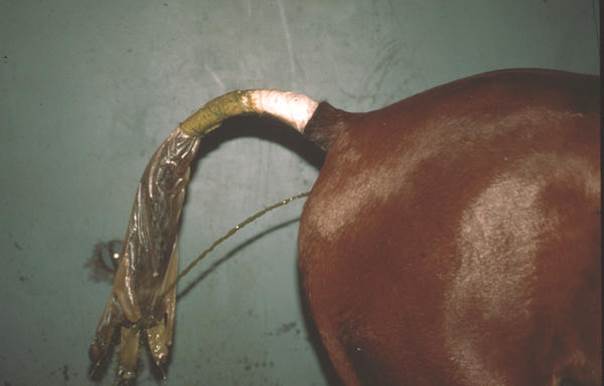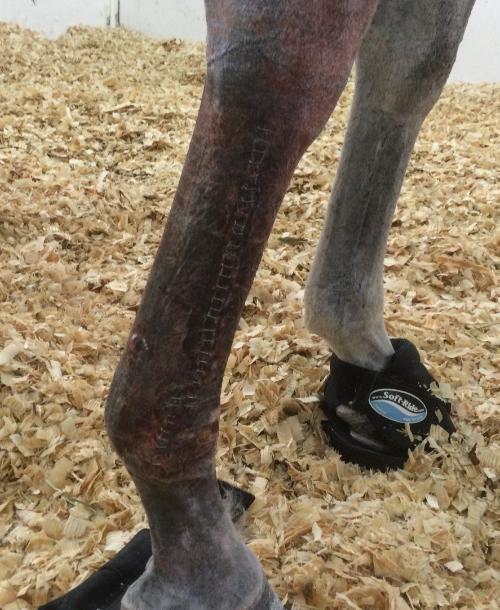Types of Laminitis
Fortunately the inflammatory and overload forms of laminitis are pretty obvious – if your horse has a fever, is very ill, has an abnormal white cell count on a blood test and/or had severe watery diarrhoea, you can be pretty confident that the laminitis is inflammatory. (Figure 1)
If a horse is 3 legged lame or close to it – then overload laminitis is most likely (Figure 2).
BUT, much more commonly, if your horse is otherwise looking fine and turned up lame then think metabolic or endocrine laminitis – This is by far the most common form of laminitis!
If metabolic laminitis is most likely, the best thing to do is to get your vet to test for PPID and EMS so you know which of these is involved – treatment of PPID and EMS is very different!

Figure 1 -Severe diarrhoea in horses (colitis) may result in laminitis
Figure 2 - Horse that has had a fracture repaired in the right foreleg wearing a foot support on the other leg to prevent overload laminitis
